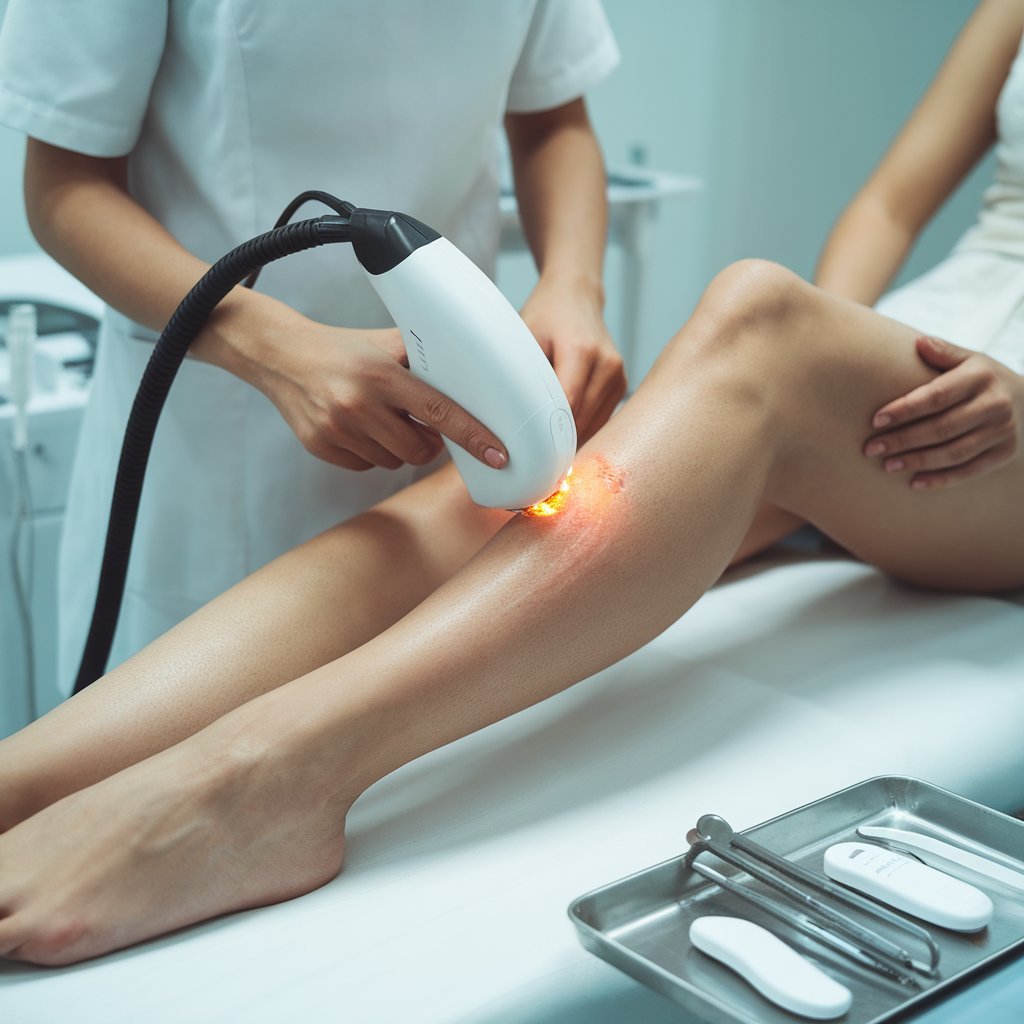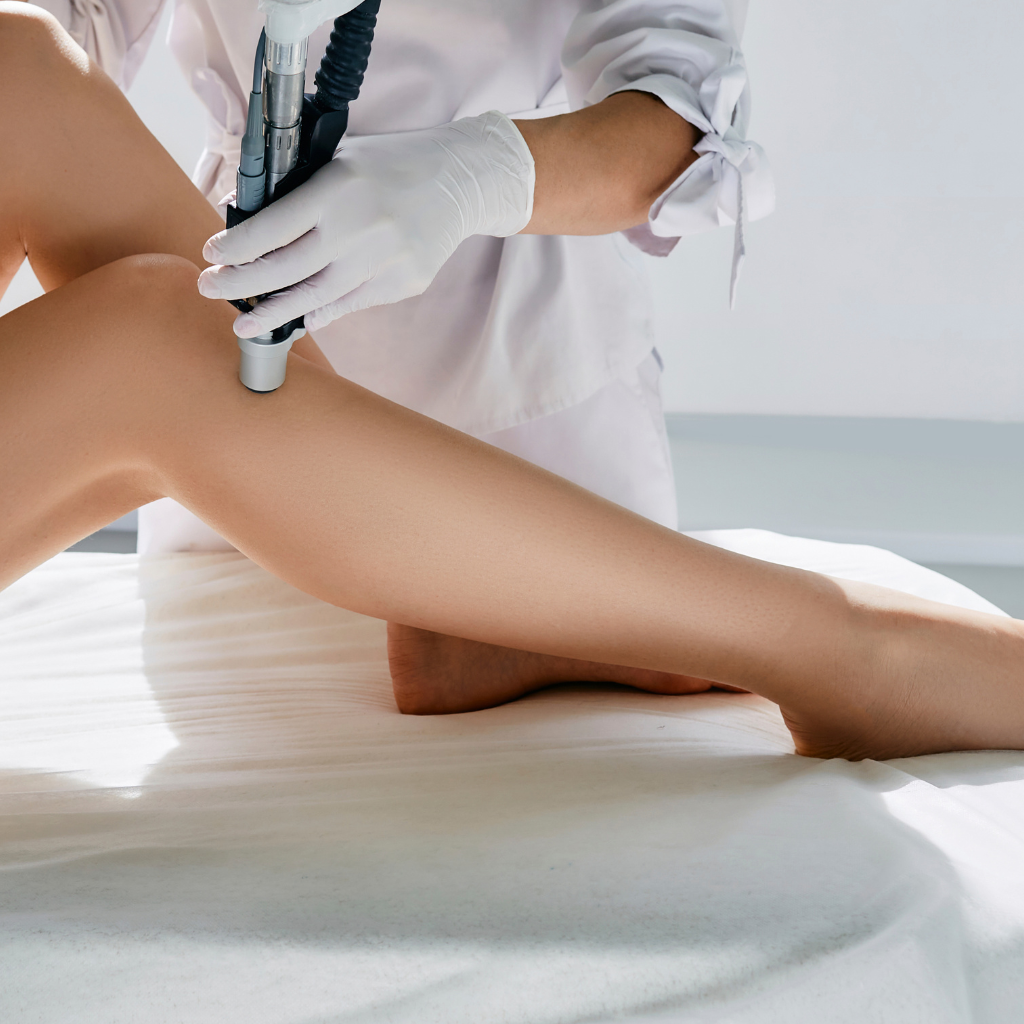Can You Use Laser Hair Removal Every Day? Things to Know
- Home
- Laser Hair Removal
- can you use laser hair removal every day

In today’s busy world, people want smooth skin without constant salon visits. This is where you need to know about laser hair removal for skin. The technology focuses on hair follicles to slow growth. But the big question quickly remains: can it be used every day? Let’s find out.
Why You Shouldn’t Use Laser Hair Removal Daily
Laser hair removal works by delivering targeted light into the hair follicles, gently heating them to reduce future growth. While it might seem like more frequent sessions could speed up results, giving your skin time to recover between treatments actually supports smoother, more balanced outcomes. Properly spaced sessions allow your skin to heal naturally and ensure the treatment remains both safe and effective.
Why Daily Laser Use Can Harm Skin
Melanin is the natural pigment responsible for the colour of your skin and hair. In laser procedures, the device targets melanin in the hair shaft. If you treat hair removal areas every single day, you might not let your skin recover. Darker skin tones often absorb more laser energy, which can lead to discolouration or even burns when treatments are too frequent. That’s why dermatologists advise waiting several weeks between appointments.
The melanin levels in hair follicles also vary with growth phases. Hairs not in the active phase won’t absorb the light effectively, making daily sessions wasteful. It’s crucial to follow a proper schedule recommended by experts. When hair removal devices are used responsibly, laser hair removal works to reduce regrowth over time. By giving your skin the opportunity to heal, you can avoid complications and enjoy smoother skin with fewer sessions. Daily repetition isn’t needed for effective hair reduction.
Does Frequent Laser Hair Removal Improve Results?
Many people seeking quicker results often ask whether more frequent sessions can enhance the effectiveness of laser hair removal. In reality, each session for upper lip laser hair removal works best on hairs in their active growth phase, so proper timing ensures more follicles are effectively targeted. Well-spaced treatments allow resting follicles to enter this phase, making them ideal for the next laser session. Thoughtful scheduling also helps optimise your investment and reduce the need for unnecessary follow-ups.
Most individuals see noticeable hair reduction within four to eight sessions when following a personalized, methodical plan. Laser technology is highly effective, especially when tailored to your skin type and tone. For those with deeper complexions, choosing the right laser and timing enhances results while maintaining skin clarity. A balanced approach supports smoother, longer-lasting outcomes and a healthier overall experience.
How Often Should You Use Laser Hair Removal for Hair Reduction?
Scheduling sessions depends on hair growth cycles. Hairs grow in different phases, so treating them all at once isn’t possible. Dermatologists often map out intervals of four to eight weeks, allowing new growth to appear. This approach supports safer hair reduction while reducing the risk of skin damage or irritation.
Developing a Safe Interval: Minimising Skin Risks
Each area of the body follows its own rhythm when it comes to hair regrowth. For instance, facial hair may grow back more quickly than leg hair. Maintaining the right interval between sessions allows your skin to rest and respond well to each treatment. For those with deeper skin tones, a tailored schedule ensures optimal results while supporting an even complexion. Medical guidance plays a key role in building this ideal timing—experts consider factors like hair thickness, hormone levels, and skin sensitivity to create a personalized plan. This thoughtful pacing gives your skin time to renew, helping each session be more effective. By following a balanced schedule, treatments stay comfortable and consistent, making your path to long-term hair reduction smooth and rewarding.

Comparing Laser vs Wax and Pluck for Hair Reduction
Some still rely on wax or pluck methods for short-term relief. Waxing offers a few weeks of smoothness but can cause ingrown hairs or dark spots, especially on richer skin tones. Plucking each hair by hand is time-consuming and can irritate follicles, leading to bumps or infections. Electrolysis hair removal, on the other hand, targets each individual follicle and provides a permanent solution, though it may require more time per session. Laser hair removal also targets multiple follicles at once and delivers more lasting hair reduction.
Though waxing may appeal for its immediate effects, repeated hot wax treatments also loosen skin over time, potentially exacerbating sagging. Plucking, while precise, is not practical for larger areas and does nothing to reduce overall regrowth. Laser sessions cost more upfront, but spare you from countless monthly salon trips. For many, the long-term gain offsets the short-term expense. By comparing these approaches, you see that laser hair removal stands out for efficiency and forward-looking results. You’ll notice fewer hairs popping up, saving time immensely overall.
IPL (Intense Pulsed Light) vs. Laser Hair Removal: Understanding the Differences
IPL uses broad light waves, while laser hair removal focuses a single beam on each hair shaft. Intense Pulsed Light can treat bigger patches, but it usually requires more sessions. By contrast, lasers directly penetrate follicles, leading to more predictable outcomes. Both methods should never be performed daily in practice.
Technology Breakdown: Laser vs. Intense Pulsed Light
Laser devices emit a concentrated wavelength that targets melanin precisely, helping to protect the surrounding skin. Intense Pulsed Light (IPL), meanwhile, uses a broader spectrum, delivering energy across a wider area. IPL offers benefits like skin rejuvenation and can be effective for various skin types. People with darker skin often achieve excellent results with laser systems designed for higher classifications. IPL is a great option for lighter complexions, providing versatile treatment benefits tailored to different needs.
Another difference is overall comfort. Some find IPL treatments gentler, but that can mean slower results. Laser setups often shorten session times. Both methods need multiple appointments, spaced weeks apart, never daily. The best choice depends on skin type, budget, and how quickly you want to see noticeable hair reduction. Always consult a trained provider first. This ensures the safest choice.
Choosing the Right Method: Factors for Indian Skin
Indian complexions often have beautiful medium to deep undertones, so choosing between IPL and laser requires careful adjustment of energy settings. A qualified practitioner will evaluate your skin tone and recommend the most suitable hair removal device. They also consider the local climate, with sun exposure common year-round. Hormonal factors like PCOS may influence facial hair density and session planning. If your skin is sensitive, extra cooling measures or longer intervals between treatments help maintain comfort. Proper Hyperpigmentation after laser care supports healthy, radiant skin and enhances your results.
Compare the cost of laser hair removal with the potential of IPL for your budget, because some clinics bundle packages. However, focusing on safety and results usually outweighs immediate savings. Take time to find a clinic that respects your unique complexion needs. If done correctly, you’ll see a consistent reduction in unwanted hair without compromising skin tone. The correct method ensures comfort and lasting change. Seek advice early to secure better outcomes.
Can You Use At-Home Laser Hair Removal Every Day?
Home kits promise convenience, letting you skip salon bookings. Yet they operate at lower intensities, and they still require proper spacing. If you wonder, “Can you laser hair removal every day?” the answer remains no. Overuse risks burns, discolouration, or delayed healing. Patience ensures better outcomes at home, over time.
Realities of At-Home Gadgets: Safety and Guidelines
Most at-home laser hair removal devices come with user manuals that specify recommended intervals, often every two to four weeks. Daily use is too harsh and can lead to redness, tiny scabs, or even unusual pigmentation. These gadgets typically have lower power than professional machines, so that results might appear more gradually. Safety features like skin sensors prevent firing on overly tanned or unsuitable areas, but they’re not foolproof. Always do a patch test before doing larger zones. It’s also wise to avoid recently waxed regions, because removing the hair root leaves nothing for the laser to target.
Keep realistic expectations, and understand that at-home devices usually require more total sessions to get similar results. If you overdo treatments, you’ll waste time and possibly invite complications. Stick to the schedule and protect skin with sunscreen to reduce the risk of sun exposure damage. Hydrate your skin to boost healing between sessions.

Professional Results vs. DIY: Weighing Costs and Time
Professional clinics use advanced equipment with customizable settings to match your skin tone, offering a highly tailored and comfortable experience. While at-home kits are more budget-friendly, they require consistent use and a bit more hands-on attention. Although the cost of in-clinic laser hair removal may seem higher, each session is efficient, often covering larger areas in less time. Plus, you’re supported by trained professionals who track your progress and adjust the approach for optimal results. At-home methods can be effective too, especially when used carefully and consistently. Before choosing, it’s helpful to consider how often treatments will need to be repeated and the long-term value of the device.
Both options can deliver great results—it’s all about finding what fits your lifestyle and goals best. Meanwhile, professional plans might include complementary checkups or discounted touch-ups. People who value long-term convenience often lean toward clinic treatments. Others prefer the privacy of handling it at home. Either way, you shouldn’t use laser hair removal every day. A balanced approach yields the safest outcome. Consult both options thoroughly to secure lasting relief.
Important Considerations: sun exposure & cost of laser hair removal
Indian sunlight is strong, making sun protection especially important after laser treatments to maintain even skin tone. Shielding treated areas with sunscreen and protective clothing supports the best possible results. Additionally, the cost of laser hair removal may vary by region, but with proper scheduling and consistent sun care, the treatment offers long-lasting, low-maintenance results for all skin types.
Guarding Against Sun Exposure: Steps for Daily Living
Sun exposure is tricky in tropical climates, where the UV index remains high most of the year. If you’re undergoing laser hair removal, extra caution is essential. Wear broad-spectrum sunscreen with at least SPF 30, reapplying every few hours. Clothing choices also matter: long sleeves, hats, and sunglasses block harmful rays. Avoid direct midday sun if possible. Keep newly treated areas covered for a couple of days to prevent immediate tanning or burning. Even minimal sunburn can increase discomfort during your next session.
Some people plan laser treatments in cooler months to reduce these worries. When you do go outside, remember that reflection from concrete or water can intensify exposure. Regular moisturising helps keep your skin barrier healthy, too. If you notice unusual pigmentation or redness that won’t go away, check with your provider. Controlling sun exposure can make or break your laser hair removal progress. Stay shaded, always.
Is the cost of laser hair removal worth it in the long term?
Many hesitate because the cost of laser hair removal seems steep at first glance. But compare that to regular wax appointments over a lifetime. While waxing might look cheaper session by session, it adds up fast. Laser treatments aim for long-lasting hair reduction, meaning fewer total visits in the future. Also consider intangible savings: less discomfort, no scheduling repeated salon appointments, and no waiting rooms.
For those with thick or quickly regrowing hair, lasers can cut down on daily grooming fuss. Some clinics offer payment plans, helping you manage upfront costs. It’s worth discussing your goals, skin type, and budget with a reputable specialist. People sometimes see a dramatic decrease in hair after just a few sessions. Over time, the convenience often proves its value. You get a more efficient routine and free up hours for other pursuits. Ultimately, weigh the investment against lifelong waxing or plucking. Relief outweighs cost.
Final Verdict: Can You Use Laser Hair Removal Every Day?
Ultimately, indeed, the answer is clear: you should not use laser hair removal every day. Hairs need to be in the right growth phase, and skin requires time to recover. Well-spaced treatments deliver significant hair reduction and fewer complications. Follow expert guidelines, and you’ll enjoy smoother, healthier skin long term.

Highly skilled cosmetologist at Tune Clinical Aesthetics, specializing in advanced skin and hair treatments.





